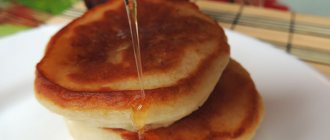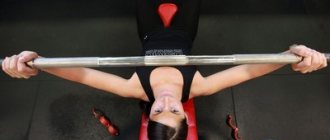The mechanism of acne on the face
Acne
– one of the most common dermatological diseases: according to statistics, about 80% of the world’s population experiences skin rashes. Acne most often appears against the background of hypertrophied sebum production: excess sebum clogs the pores and so-called acne appears.
Acne
- a sebaceous plug with an admixture of keratinized skin particles accumulated at the mouth of the hair follicle or the ducts of the sebaceous gland. When exposed to oxygen, sebum oxidizes and the plug acquires a characteristic dark gray color.
The sebaceous plug creates an ideal environment for the proliferation of acne bacteria (Propionibacterium acnes or Malassezia), which provoke the occurrence of inflammatory foci - acne. Such bacteria constantly live on the skin and are anaerobic, i.e. do not need oxygen to synthesize energy, so when the ducts of the sebaceous glands are clogged, an ideal airless environment is formed for their reproduction.
Acne
– an inflammatory element of the sebaceous gland, which arose against the background of blockage of its ducts by external contaminants and the proliferation of acne bacteria in them. Pimples differ from blackheads by the presence of inflammation, redness and internal purulent contents (white head).
Predominantly oily skin types are predisposed to acne. Properly selected corrective care that meets the needs of the type will help prevent the occurrence of rashes and regulate the secretion of sebum.
There are several types of rashes:
- Open comedones (blackheads) are superficial rashes that consist of compacted gray or black skin secretions (due to the oxidative reaction of the contents with oxygen).
- Closed comedones (subcutaneous acne) - the mechanism of occurrence is similar to open comedones, only the contents are located under the skin.
- Papules are small subcutaneous pimples without obvious purulent content.
- Pustules are a pimple in its standard manifestation with purulent content and a red, inflamed area.
- Nodules are hard subcutaneous nodules that protrude to the surface of the skin, often accompanied by purulent discharge.
Treatment of acne (acne)
Acne causes serious psychological discomfort. And self-treatment of acne can lead to the formation of scars and scars, especially if you try to remove acne and pimples on your own. Therefore, it is best to contact a qualified dermatocosmetologist.
Active acne treatment is aimed at solving the following problems:
- preventing the appearance of new formations (comedones);
- normalization of the amount of sebaceous gland secretion;
- destruction of existing comedones;
- suppression of bacterial growth and relief of inflammation.
Why do acne appear on the face: the main reasons
According to epidemiology, skin rashes in the form of acne occur in 80% of adolescents and 20% of adults. The reasons for their occurrence in people of different ages differ: it can be either hormonal changes in the body in adolescents or hormonal surges due to certain diseases, medications taken, or stress in adults.
What causes the appearance of acne and imperfections at different ages?
To choose the appropriate way to combat acne, you first need to correctly determine the cause of its occurrence. Sometimes acne on the face appears as a concomitant symptom of the underlying disease, but most often the following factors contribute to their occurrence.
- Hormonal imbalance (main cause)
Excessive sebum production indicates a high level of male sex hormones (testosterone, dihydrotestosterone) in the blood and a high susceptibility of the sebaceous glands to androgens. Estrogens (female sex hormones) suppress sebum production, and androgens (male hormones), on the contrary, stimulate it. Hormonal imbalance is the main cause of teenage acne during the period of hormonal changes in the body. In cases where purulent rashes systematically appear on mature skin, there is a possibility of changes in the amount of steroid hormones in the blood, which can increase the hyperreactivity of the sebaceous glands. - Thickening of the stratum corneum of the skin (hyperkeratosis)
Due to a violation of the detachment of keratinized epithelium, the ducts of the hair follicles become clogged: the inability of the skin to promptly clear itself of dead cells provokes blockage of the sebaceous glands. - Unhealthy diet Diet
plays an important role in the appearance of acne: if acne worsens, it is recommended to exclude flour, confectionery, fatty, fried foods from the diet and increase the consumption of fresh vegetables and fruits. Prevention of rashes involves a balanced diet and the presence in the diet of essential vitamins: A, C, group B, Omega-3 fatty acids, as well as foods rich in zinc, antioxidants, beta-keratin and fiber. - Gastrointestinal diseases
As a result of poor nutrition and disruption of the gastrointestinal tract, the balance of intestinal microflora changes, which leads to an excess of toxins in the body, which negatively affects the condition of the skin. - Bacteria
Purulent rashes appear due to bacteria (Propionibacterium acnes or Malassezia), which multiply in an environment favorable to them. - Heredity
The peculiarity of hormonal levels is often inherited. - Stress
During stressful periods of life, the body produces excess stress hormone - cortisol, which provokes increased production of sebum and, as a result, clogging of pores and the occurrence of inflammation. - Incorrectly selected care
The main thing that should be given special attention in the fight against acne is a beauty routine for facial skin care.
Regime, diet and acne. What should you avoid?
One of the causes of acne in adults is poor diet. Especially harmful to skin health are foods with a high glycemic index (GI), that is, those that lead to a sharp increase in blood sugar levels in a short time after consumption.
A rapid rise in glucose levels signals a significant release of insulin. Hyperinsulinemia develops, and it occurs more often in women than in men. This condition negatively affects the health of the skin and leads to the formation of acne.
A connection has been established between the presence of gynecological diseases in women and the production of excess insulin. Hyperinsulinemia is often observed in women who suffer from polycystic ovary syndrome. Therefore, such patients especially need a special diet.
Foods with a high glycemic index include: popular fast food, beer, white bread, chips, baked goods, and sweets. Some studies indicate a negative role of milk consumption in the development of acne.
Other ingredients that have potent acnogenic effects include artificial colors, flavors, and synthetic compounds found in many popular products.
Promotes the development of acne: irregular diet, constant living under stress, smoking cigarettes, and short sleep.
Recently, there has been talk about the negative impact of using birth control pills too early, which as a result can cause endocrine disruption and the development of acne at an older age.
ONLINE REGISTRATION at the DIANA clinic
You can sign up by calling the toll-free phone number 8-800-707-15-60 or filling out the contact form. In this case, we will contact you ourselves.
If you find an error, please select a piece of text and press Ctrl+Enter
On what parts of the face do acne appear and what does it depend on?
Most often, painful acne occurs in the so-called T-zone: forehead, nose, chin - in this area the sebaceous glands are most active, and the pores are enlarged. But acne often occurs on the cheeks and cheekbones (U-zone) - this is due to various reasons and the state of the body.
Pimples on the forehead, nose and chin (T-zone)
In the area of the forehead, nose and chin there is an abundance of sweat and sebaceous glands - this is the cause of increased oily skin. It is believed that acne covers the forehead due to disorders of the large and small intestines. On the chin, imperfections are usually associated with hormonal imbalances and gynecological problems.
Pimples on the cheeks and temples (U-zone)
Pimples on the cheeks are most common in teenage boys; if rashes in this area appear in adult women, it is worth checking the hormonal system and intestines. The temples on both sides are a projection of the gallbladder, and if pimples and acne appear in this area, this indicates its imbalance.
Acne classifications
In medicine, this condition is divided into several criteria - according to the severity of the condition, according to age, etc. As for the stages of the disease, I will describe them below.
If we classify according to age, it looks like this:
- Baby acne in newborns - the causes of these rashes are a hormonal intrauterine crisis, the production of excess testosterone against the background of a sharp decrease in estrol in the first days of a child’s life. Also, a rash in a newborn may be due to congenital adrenal hyperplasia or the development of an androgen-producing tumor.
- Juvenile acne - they form during puberty against the background of hormonal changes.
- Acne in adults – I described the causes above. In short, the following factors provoke their appearance:
- diseases of internal organs, endocrine disorders;
- premenstrual condition;
- professional activity, for example, if a person works in production related to oil and oil;
- taking certain medications, etc.
How to prevent acne on your face?
Proper daily care based on gentle cleansing, regular moisturizing and suppression of inflammation will help keep the situation under control.
For oily skin types, care consisting of three stages is important:
- cleansing pores of skin impurities and dead dermis,
- deep hydration and protection against dehydration,
- restoration of inflamed skin.
Choose high-quality and suitable cosmetics
Use safe cosmetics that are suitable even for sensitive skin - they do not contain potential allergens and do not cause irritation. It is best to buy such products in pharmacies - products from pharmacy brands are certified and created under the supervision of dermatologists.
The Effaclar range of care from La Roche-Posay has been tested by dermatologists, meets all the requirements of oily problem skin, and helps to effectively cope with the appearance of acne.
Comprehensive daily care will reduce inflammation and prevent the appearance of new ones.
- Provide the dermis with gentle cleansing, use gels or foams for washing that do not contain alcohol or aggressive acids. Effaclar foaming gel for oily acne-prone skin
will gently remove excess sebum and deeply cleanse pores . The gel does not dry out sensitive skin and gives it a feeling of cleanliness and freshness for a long time. - Effaclar pore tightening lotion
will help remove residual cleanser and impurities, as well as reduce pore size . The ultra-soft formula of the product gently cares for the skin, smoothing and mattifying its surface. The lotion also prepares the epidermis for the application of the cream. - The moisturizing mattifying emulsion Effaclar Mat
will provide the skin with a mattifying effect for up to 8 hours and will protect against dehydration for a long time . A product with La Roche-Posay thermal water, glycerin, zinc, perlite and the sebum-regulating component Sebulyse, mattifies the skin, eliminates excess oily shine on the face for 8 hours, tightens pores and moisturizes well. - For spot application, use corrective local product Effaclar AI
, intended for oily problem skin prone to imperfections. Keratolytic components and elements in the product suppress bacterial activity and smooth the epidermis.
EFFACLAR GEL
Cleansing gel
Cleanses skin and pores of impurities. Removes excess sebum.
951 rub. more details
EFFACLAR
Pore tightening lotion
Effectively cleanses pores. Helps reduce pore size.
RUB 1,468 more details
EFFACLAR MAT
Sebum-regulating emulsion
Eliminates oily shine. Visibly tightens pores.
RUB 1,618 more details
EFFACLAR AI
Sebum-regulating emulsion
Effectively affects imperfections. The surface of the skin is smoothed.
RUB 1,417 more details
Follow a daily skin care ritual
Stage 1: cleansing
Wash your face twice a day: morning and evening. To cleanse oily skin, choose products containing acids (salicylic or glycolic). Exfoliate your skin a couple of times a week - this will help even out the skin texture and deeply cleanse the pores.
Effaclar Micro-Exfoliating Cleansing Gel
with acids (salicylic and lipohydroxy acid) provides a micro-exfoliating effect without scrubbing particles, eliminates impurities and dead cells accumulated on the surface of the skin, preventing clogging of pores.
EFFACLAR
Cleansing gel
Reduces pronounced imperfections and post-acne. Intensively cleanses the skin.
RUB 1,218 more details
Stage 2: fight inflammation
Lotions for oily skin help to successfully combat clogged pores and inflammation. These products contain acids that dry out small pimples.
Corrective cream-gel for problem skin against imperfections and post-acne Effaclar DUO (+)
in addition to acids (salicylic and lipohydroxy acids), it contains Aqua Posae Filiformis and Mannose, known for their ability to restore the skin microbiome, which helps reduce the number of emerging inflammations, as well as procerades - to prevent stagnant spots (post-acne).
EFFACLAR DUO(+)
Corrective cream-gel
Reduces pronounced imperfections. Prevents the re-formation of imperfections.
RUB 1,187 more details
Stage 3: Hydration
With a lack of moisture, the sebaceous glands begin to work more actively, provoking the appearance of new inflammations. Remember: by moisturizing your skin, you normalize the functioning of the sebaceous glands.
Effaclar H Multi-Repairing Moisturizing Soothing Treatment
contains: ceramides that restore the stratum corneum and new generation lipids, increases the protective functions of the skin, deeply and long-term moisturizes and softens the epidermis.
EFFACLAR H
Soothing Moisturizer
Suitable for use in conjunction with drying products for problem skin.
RUB 1,458 more details
How to get rid of acne at home using cosmetics
To get rid of acne forever, stock up not only with patience, but also with a decent arsenal of skincare products with sebum-regulating, exfoliating and anti-inflammatory ingredients. The minimum program is a gel or foam cleanser, makeup remover, toner, scrub and face mask.
What to do if acne on the face does not go away: treatment methods
If you are unable to cope with acne exacerbation on your own at home, make an appointment with a dermatologist. The specialist will prescribe additional tests if necessary and prescribe appropriate medication. To get rid of acne, the beauty salon offers several types of cleansing, as well as mesotherapy. It is important to remember that during the period of relapse of rashes, you should refrain from any cosmetic manipulations.
Regular corrective care and compliance with all the preventive measures described above will help maintain the normal condition of oily skin and minimize the risk of new acne on the forehead and cheeks.









